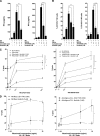Ibrutinib antagonizes rituximab-dependent NK cell-mediated cytotoxicity
- PMID: 24652965
- PMCID: PMC3962169
- DOI: 10.1182/blood-2014-01-547869
Ibrutinib antagonizes rituximab-dependent NK cell-mediated cytotoxicity
Figures


References
-
- Khurana D, Arneson LN, Schoon RA, Dick CJ, Leibson PJ. Differential regulation of human NK cell-mediated cytotoxicity by the tyrosine kinase Itk. J Immunol. 2007;178(6):3575–3582. - PubMed
-
- Cartron G, Watier H, Golay J, Solal-Celigny P. From the bench to the bedside: ways to improve rituximab efficacy. Blood. 2004;104(9):2635–2642. - PubMed
Publication types
MeSH terms
Substances
Grants and funding
LinkOut - more resources
Full Text Sources
Other Literature Sources
Medical

